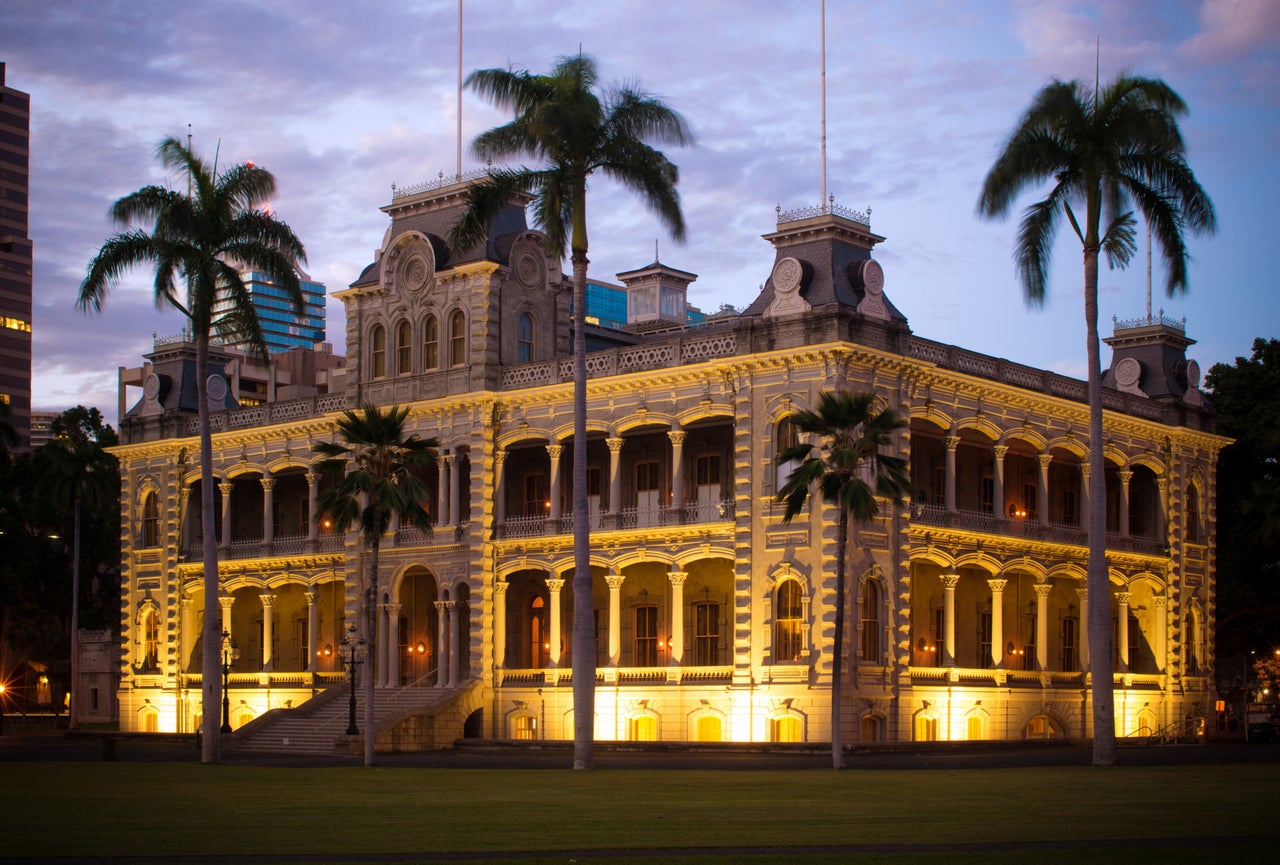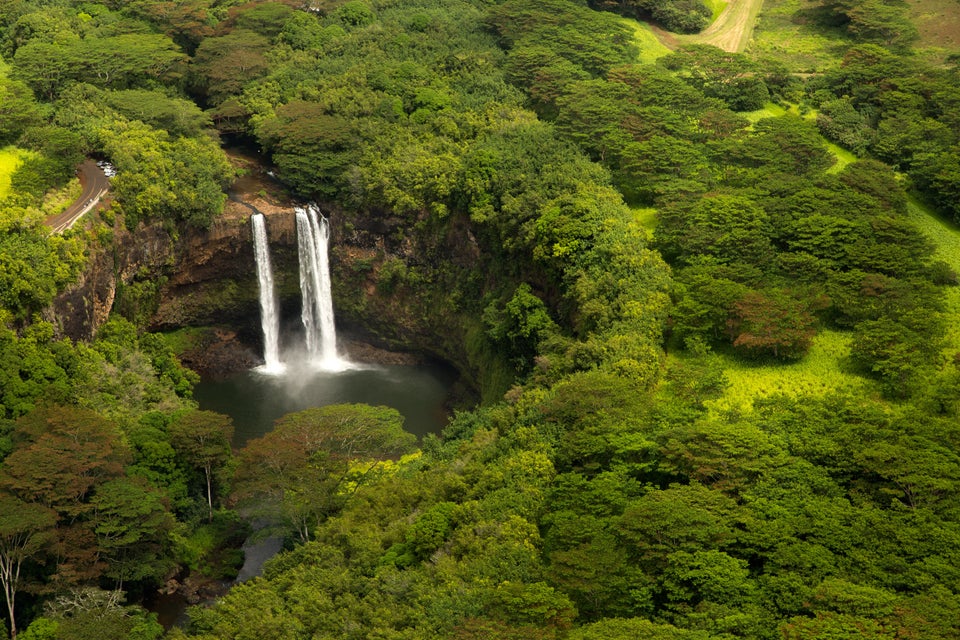HONOLULU ― There are different Hawaiis for different people.
The Hawaii that most tourists see is a place that exists between two flights, with island tours, casual mentions of the “aloha spirit,” a luau or a muddy hike.
Those who live here see all that too, against the backdrop of a hometown that is increasingly difficult to afford. Locals have to reckon with the skyrocketing rent and real estate market, stagnant wages, ridiculously-priced grocery bills and the worst homelessness rates per capita in the nation.
Then there’s the Hawaii experienced by Native Hawaiians. It includes all the beauty, lifestyle, exorbitant cost-of-living and affordable housing crisis, but added to it is another painful detail: Hawaii, the state, is a stolen land.
Hawaiians “lost their queen right there, yards from where I’m standing,” said Democratic state Rep. Kaniela Ing while looking out from the Hawaii State Capitol balcony in Honolulu. Next to the building is the Iolani Palace where, in 1893, a group of American businessmen and sugar barons, backed by the American military, overthrew the Hawaiian Kingdom by forcing Queen Liliuokalani to relinquish control of it.
“It’s intense to look at that from my office every day,” Ing said. “There is some fire inside of me that, even though I’m working for the state at all times, I still have a love for” the original Hawaiian nation.

Native Hawaiians have a sacred relationship with their land ― a cultural value known as aloha ʻāina, which translates to a love of the land or that which nourishes you ― but centuries of colonization and shady moves by American entrepreneurs have led to the displacement of many natives, according to Kalani Young, a Native Hawaiian researcher currently studying at the University of Washington.
Data collected by the Department of Housing and Urban Development in 2016 shows that 42 percent of Hawaii’s homeless population identifies as Native Hawaiian or other Pacific Islander ― and Young says that’s no coincidence.
“What it means to be Native Hawaiian [today] is obviously shaped by colonialism and imperialism in Hawaii, so we as a people have a lot of burden to carry and are often blamed for individual failures [like homelessness] that are beyond our control,” Young said.
Young says that Native Hawaiians are especially vulnerable in Hawaii’s current cost-of-living and affordable housing crises because the current system, installed by the U.S. after Hawaii was annexed and statehood was established, was designed to benefit “non-Hawaiians who are not from here and who have access to resources that [Hawaiians] don’t have.”
The overthrow of the Hawaiian Kingdom, which Congress formally apologized for in 1993, is only one of the more prominent examples of this displacement of Hawaiians, but it’s happened over the centuries ― from American missionaries attempting to “civilize” Hawaiians with Christianity and Western plantation owners using Hawaiian land for profit while changing the Kingdom’s laws to benefit themselves, to even more violent means of gaining control over the islands.
In 1887, years before the U.S. overthrow, a militia made up of white businessmen forced King David Kalakaua at gunpoint to sign a new constitution which limited the king’s power and gave themselves more control over the kingdom.
The so-called Bayonet Constitution gave foreigners (namely American and European residents) the right to vote while stripping that same right from Asian residents and many Native Hawaiians who could not meet the financial and land-ownership requirements needed to vote.
And when Westerners came to Hawaii, they also imported with them white supremacist ideals, according to Young. Around the time of the overthrow, for example, newspapers published racialized images of Queen Liliuokalani with features drawn to look more savage and exaggerated.
That imagery of Hawaiian royalty “demonstrated their idea of who should be in power and who shouldn’t be,” Young said.
“There’s a long history of racism in Hawaii, displacing Hawaiians from positions of power, or from government positions, or from engaging in the market economy,” Young added. “Hawaiians have been, in a sense, sold out to this day by capitalism.”

To this day, some Native Hawaiians are still passionately fighting to raise awareness about these injustices while seeking to gain back control of their land.
In January, on the 125th anniversary of the U.S. overthrow and less than a week after a false ballistic missile alert sent the state into a panic, thousands of Native Hawaiian activists staged a march at the Iolani Palace to commemorate the injustices made upon Hawaiian people.
Some people marched with the Hawaiian flag while others proudly held signs that read, “I am NOT an American.” It was a nod to their resistance of the U.S. annexation of Hawaii into U.S. territory and, later, its establishment as a state.
“The weekend scare drives home the dangerous situation we are in as a client military base for the United States,” Jon Osorio, a Hawaiian studies professor at the University of Hawaii Hawaiian, said at the rally, referencing the false missile alert and the rising tensions between the U.S. and North Korea.
“It should be clear by now that if any nation is threatening our security, it is the United States.”
This distrust isn’t just a reflection of injustices in the past. Some Native Hawaiians feel like Western values are still invading their sacred spaces ― and they continue to speak out.
Native Hawaiian activists for years have been protesting against the construction of what would be the world’s largest telescope atop Mauna Kea on Hawaii’s Big Island. In recent years, they have gained attention from A-list celebrities, including the Oahu-born actor Jason Mamoa. Mauna Kea’s summit, where other telescopes are already built, is considered sacred ground to Native Hawaiians. It is also a habitat for native and endangered plants and wildlife.
Another uproar over land happened last year, when Facebook founder Mark Zuckerberg filed lawsuits against hundreds of people in 2017, in an attempt to force them to sell their inherited land located within a private 700-acre estate he purchased on Kauai years earlier. The multibillionaire admitted later that he made a mistake, dropped the lawsuits and vowed to work with the community.
Ing, who chairs a committee that handles Native Hawaiian affairs, said that Zuckerberg’s lawsuit felt especially insulting given Hawaii’s history of wealthy non-native people taking over natives’ inherited land.
“There have been so many injustices on Hawaiians over the last 200 years,” Ing said.
“And to see a billionaire with little stake in our islands buy up that much land without consulting with any of the community ... I just think that’s just extremely poor form.”
What the current government system needs is more aloha, said Twinkle Borge, the leader of one of Hawaii’s largest and most successfully-ran grassroots homeless camps.
Borge, who is Native Hawaiian and homeless herself, is responsible for a remote encampment at the Waianae Boat Harbor on Oahu, where over 200 people, including children and families, live in makeshift homes and follow a strict set of rules set by Borge and other appointed leaders. (Young, who previously lived at the camp for several months, says there is an overrepresentation of Hawaiians there, too.)
“They forgot the sense of aloha,” Borge said of the way local government runs in Hawaii. Officials still threaten to clear out her village, along with other homeless camps in the urban areas of Oahu, even despite the continued media coverage. (The most recent sweep at the Waianae camp was called off in March after the camp’s leaders met with the governor.)
“In the capitol, they will tell me, ‘you made big waves,’” Borge said, referring to the local and national media attention her camp holds.
“It’s people like us who put you in your seat,” she said. “I believe we should have our own council, and when they decide to make something or put something into law, the person we [Hawaiians] appoint should be sitting at the table, too.”
According to Young, continued protests like the ones for Mauna Kea and land rights in Kauai, as well as Borge’s commitment to her Waianae village, show that Native Hawaiians won’t hesitate to continue protecting their cultural ties to their home.
“I think that there’s a resurgence of resistance,” Young said. Hawaiians “have been recently galvanized by the Mauna Kea movement [and other acts of activism] and are returning home to maintain their connection to the ʻāina (land).”
For other activists, the protests and demonstrations prove that today’s Native Hawaiian community is one that has survived through a vicious Westernization.
“We mourn the taking of our government in 1893, but the truth is that we should be proud of what we kanaka maoli (Native Hawaiians) have managed to do without a government that cared for us,” Osorio, the Hawaiian studies professor, said during the anniversary of the overthrow in January.
“It is clear that our culture, not just our language, not just our arts, but our values and essential character as a people, these things have all survived.”
This article has been updated with additional comment by Twinkle Borge about the homeless camps.
CORRECTION: A caption for a photo previously included in this article incorrectly said that a statue of King Kamehameha I stands in front of the Iolani Palace. That statue is located in front of the Hawaii State Supreme Court.

